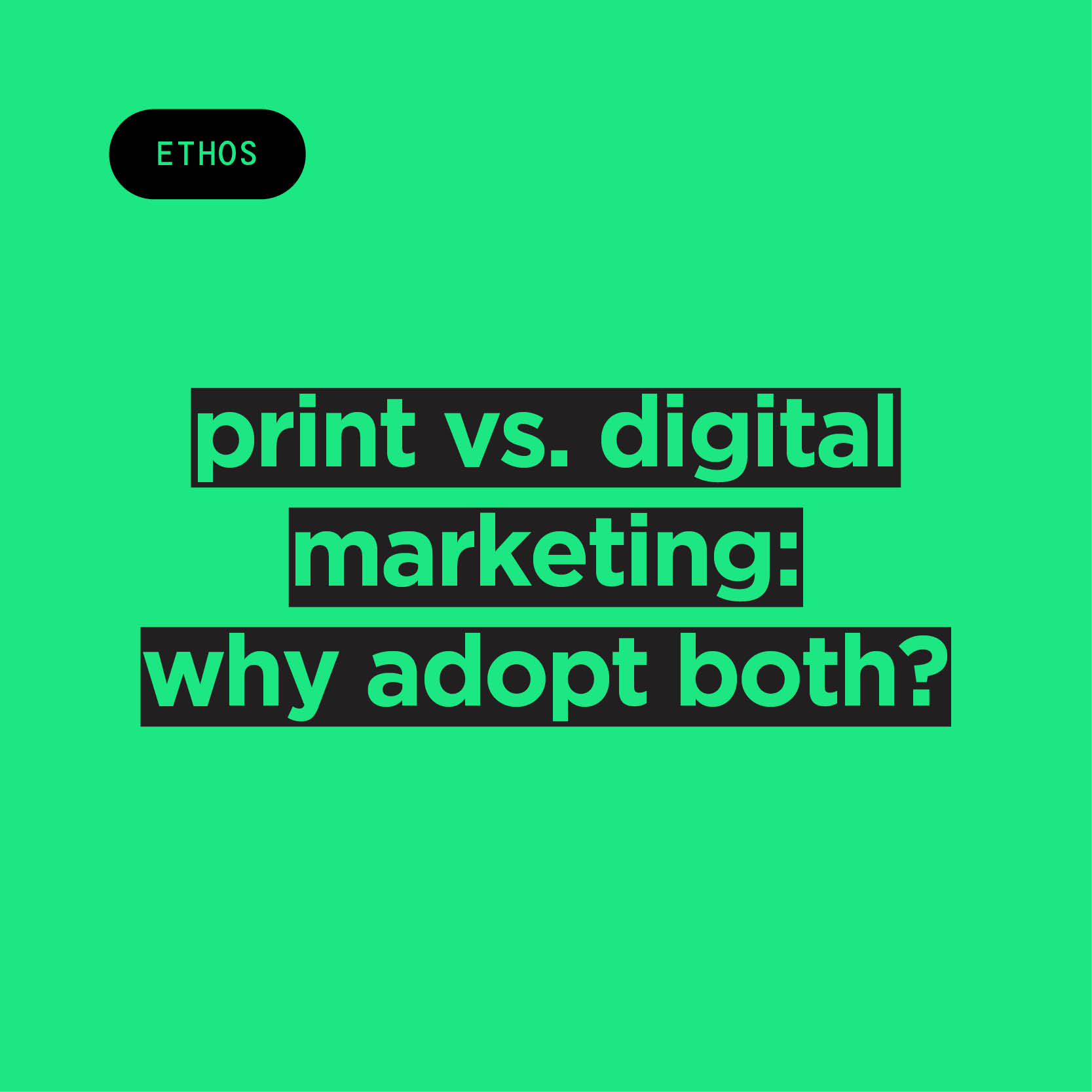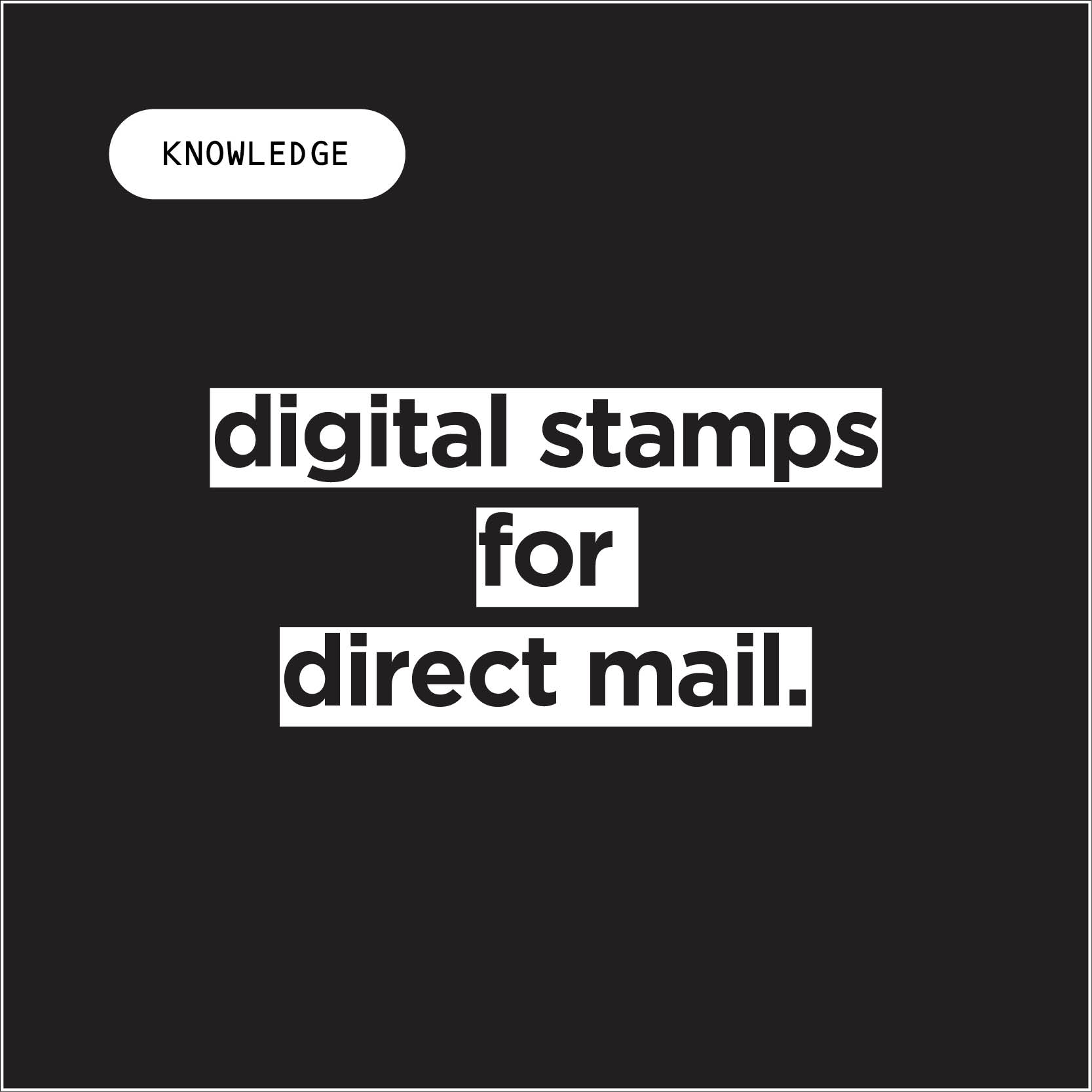
Every now and then, a conversation resurfaces in the world of responsible business. It goes something like this: "If we care about the planet, shouldn’t we abandon print and go fully digital?" It is a fair question.
It is also the wrong one.
The truth is that responsible leadership is never about choosing an easy extreme. It is about making thoughtful choices. It is about balancing opportunity with accountability. And when it comes to print and digital marketing, the science is clear. Both have environmental impacts. Both have benefits. And both, when managed with care, can play a role in an ethical and effective communication strategy.
Digital appears clean and frictionless, seemingly free from the material footprint that accompanies paper, ink and physical distribution. Yet as with so many debates in responsible business, the deeper truth reveals itself only when we are willing to slow down, look broadly and consider the full picture rather than the convenient one.
The (Hidden) Impact of Digital Marketing
Digital technologies have revolutionised communication, but they have also introduced a vast and often invisible layer of environmental impact that stretches from the enormous energy consumption of data centres to the manufacturing, disposal, and frequent upgrading of electronic devices — each carrying its own heavy footprint. Scientists estimate that the digital ecosystem accounts for roughly 2 to 4% percent of global greenhouse gas emissions, placing it in the same range as the aviation sector, a comparison that often surprises people who associate emissions only with physical goods and not with the energy required to sustain the constant movement of data across the world. As demand for streaming, cloud storage, artificial intelligence, and high resolution digital content grows, so too does this footprint, creating a reality in which digital is not the environmental free pass it is sometimes assumed to be.
Responsible Printing Offers a Solution
Print, on the other hand, is easy to see and therefore easy to critique, because its impacts are tangible and familiar. Yet modern print, when managed responsibly, can operate within a completely different environmental paradigm from the one many imagine. Sustainably-managed forests act as long term carbon sinks. Responsible sourcing ensures that new trees grow to replace those harvested, locking carbon back into the ecosystem in a regenerative cycle. Recycled papers reduce the demand for virgin fibre. Vegetable-based inks break down more readily in the environment. High-efficiency printers use less energy and produce less waste. When print is produced through a conscious, evidence-based and well-managed supply chain, its footprint looks significantly different from a simplistic "paper equals bad" narrative.
B Lab's Stance
B Lab recognises this complexity, and for that reason it has never taken the stance that printing is inherently irresponsible or incompatible with B Corp values. Instead, B Corps are expected to manage printing thoughtfully and transparently as part of their broader environmental performance. Printing and paper use are assessed within the Environment section of the B Impact Assessment, where companies must demonstrate high standards in resource conservation, waste reduction and continuous improvement. They are encouraged to use sustainably-sourced or recycled paper, invest in energy-efficient equipment, adopt vegetable-based inks and partner with suppliers who themselves adhere to rigorous environmental practices, ideally other B Corps who are aligned in their commitments. Waste should be minimised where possible and recycled where unavoidable, with thoughtful reuse options considered for offcuts or shredded materials. Environmental policies should include clear printing guidelines, and companies should monitor their paper usage, set reduction targets and report transparently on their progress over time.
This expectation is grounded in a simple truth. The goal of B Corp certification is not to eliminate all activities with environmental impact. It is to ensure that businesses approach those activities with intention, intelligence and a commitment to improvement year after year.
The Unique Power of Print
Beyond the data and the assessments sits another dimension that matters deeply, one rooted not only in the mechanics of sustainability but in the lived human experience of communication. Print continues to hold a unique and powerful place in how people absorb, recall and emotionally respond to information. Cognitive science has shown repeatedly that humans remember printed material more consistently than information encountered on a screen, because the tactile engagement of holding and turning a piece of print activates areas of the brain associated with deep memory formation. Print slows us down. It invites reflection. It creates physical presence in a world saturated with digital noise. For certain messages, for certain audiences and for certain brand experiences, this slower, more grounded form of communication has a value that cannot be replicated digitally.
Digital communication, meanwhile, is unmatched in its speed, accessibility, and reach. It connects businesses with global audiences in seconds. It reduces material use when applied thoughtfully. It offers data-driven insights that help organisations refine and improve their messaging in real time. But it is also ephemeral. Overwhelmed by endless scrolls and notifications, many messages are gone as quickly as they appear. The most responsible and effective organisations understand that neither medium is inherently superior. Each excels in its own context. The challenge and opportunity lie in choosing the right tool for the right moment, and using both with an unwavering commitment to environmental responsibility.
Why Jump Is a Responsible Marketing Partner
At Jump, we have long believed that responsibility in marketing is not achieved through single issue thinking or simplistic ‘either or’ choices. It is achieved through systems thinking, transparency and a willingness to measure what matters even when it is difficult. As a certified B Corp, we embed environmental and social considerations into every aspect of our operations. Our environmental management system is grounded in the ISO 14001 standard. Our quality management follows ISO 9001. Our carbon strategy aligns with the Science Based Targets initiative, ensuring that our reduction pathway is grounded in rigorous, globally recognised climate science rather than aspirational claims.
We measure all scopes of our greenhouse gas emissions. We verify them according to the IPCC GHG Protocol Corporate Standard. We report them annually in our Impact Reports so our clients can see exactly where we stand and how we are improving. We keep our infrastructure local, reduce long distance distribution emissions, and ensure that our footprint is traceable. Our print partners are carefully selected for their strong environmental credentials, including recycling systems, renewable energy use and closed loop waste processes, and we work continuously with them to explore new improvements in materials and methods.
For us, responsibility is the willingness to interrogate every step of our marketing processes, whether digital or physical, and ask how we can reduce waste, conserve resources and deliver exceptional creative work without compromising the health of the planet. It is the belief that businesses do their best work when they are honest with themselves about their impacts and rigorous in their efforts to reduce them. It is the conviction that clients deserve marketing partners who care as much about the integrity of the process as they do about the quality of the final product.
A Better Way Forward
If we are serious about building a more sustainable economy, then we must resist the temptation to reach for simple binaries. Print is not the enemy and digital is not the saviour. Both carry environmental impacts. Both carry opportunities. Both can be used thoughtfully or carelessly. The question is not which medium is pure, rather which combination of media, materials and practices allows us to communicate powerfully while acting responsibly.
Responsible businesses choose balance over extremism, choosing informed decisions over assumptions. They choose to measure, to disclose and to improve. And in doing so, they demonstrate a kind of leadership that is urgently needed in a world that cannot afford careless communication.
The future of marketing is not purely print or purely digital. It is built by organisations willing to match creativity with conscience, ambition with accountability and innovation with the humility to acknowledge that every choice we make carries weight.


